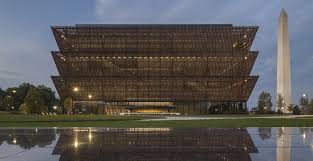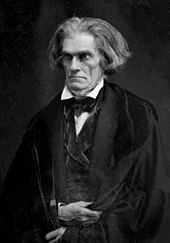
Margie and I are frequent visitors to Washington, DC. We love its history, its cultural activities, and its restaurants. We love the feeling of pride in being Americans that comes with a visit to the city. Over the years we have visited almost every major site from the Tomb of the Unknown Soldier to the Treasury to see money being printed. But there had been one place that had eluded us since it opened in 2016, the National Museum of African American History and Culture. We tend to be last minute travelers and the tickets have always been booked up months in advance, until this year.
We finally got tickets during our visit in May. It was a profound experience and I recommend it to everyone. Beginning with the early 1600s, it is a magnificently presented and emotionally challenging trip through the Black experience in America. As would be expected, slavery plays a significant role in the story told by the museum just as it does in the lives of African Americans and in the history of America.
I can never know nor understand how the history of slavery affects black Americans. I do know, after visiting the museum, I was deeply affected and that if those enslaved people had been my ancestors, I’m not sure I would be able to accept it without deep anger. It made me think that it is time for me to take a deeper look at slavery and how, 150 years later, it still reverberates through our society.

Intellectually, I believe I have had a basic understanding of the facts of slavery, its economics, its structure, and its broader role in history, particularly in the 19th century. But until I saw those exhibits I had not had a true understanding of the suffering, the pain, and the dehumanizing impact inflicted on those who endured it. I want to share with you some of the things I have learned about slavery.
John C. Calhoun, vice president under both John Quincy Adams and Andrew Jackson, was one of the strongest advocates of slavery ever to have served in the US government. He defended slavery as an almost benign institution that benefited the black people who were subjugated in his service. He used the term “the peculiar institution” or “the peculiar labor” to avoid the word slavery. As you can see below, he may also have been one of the scariest looking people ever to have been in our government. But slavery didn’t start in the American south and to begin to understand it we must go further back in history.

Slavery as an institution has been around for millennia. It is even mentioned in the Bible. However, most Americans’ concept of slavery is that of chattel slavery as practiced in the antebellum south in the United States and in the Caribbean. It is important to understand the history of slavery in the world to gain a true perspective on the odious nature of that exceptionally cruel form of slavery.
The practice of slavery preceded written history. It occurred in ancient Egypt, in the early mid-eastern states, and in ancient China. It is described in both the Hebrew and Christian bibles. Mesoamerican civilizations were known to have practiced slavery prior to European contact. It appears to have been well-established in almost all ancient cultures.
However, most historic types of slavery generally differed from what we think of as slavery in the Americas. In ancient civilizations many slaves were either prisoners of war or what were known as debt slaves. War slaves sometimes were repatriated when wars ended. Those who were not sacrificed to the victors’ gods were occasionally integrated into their captor’s society. This is not to say that this type of slavery was not brutal. Slaves were often malnourished and were at times subjected to such arduous working conditions that they died of exhaustion.
Debt slaves were those who entered a period of slavery because of the inability to pay bills but were sometimes able to work their way out of slavery and purchase their freedom. Their treatment, while less harsh than other forms of slavery was far from kindly.
Similarly, the serf system of the European middle ages was a form of slavery where peasants were bound to the land and owed their lords their service but were not specifically owned by the lord. A modern analogy to serfdom occurred in the first decades of the 20th century where miners were bound to the coal companies by their heavy debts to the company store.
Among the earliest international slave traders where the Vikings, who may have been the first to develop the slave trade into a purposeful business rather than a byproduct of war. They raided into the Baltic and Slavic countries and sold their captives into slavery in Western Europe and the northern African Muslim countries. Because Muslim law prohibited one Muslim from holding another in slavery, the trade in slaves quickly became international and highly profitable. It may be apocryphal, but some people claim that the word slave was derived from the fact that many Viking slaves were of Slavic origin.
While it would never be argued that any slaves were well treated, most did not suffer the type of abuse that existed in the Americas. Chattel slavery considered the slave to be not human but property. Property that could be disposed of or treated as the owner saw fit. This led to be a form of abuse which was particularly heinous.
But even this form of slavery was more complex that most of us realize. In the African slave trade, many of the people who were bound into slavery initially were captured and sold by other Africans. Most of the African coast slavers were Black rulers who sold either their subjects or their enemies captured in battle. Many Muslim African rulers had no problem selling other Africans they considered to be pagan. And of course, the Christian whites had no problem enslaving people that they felt to be “less than human.”
While we in the United States focus on slavery in the 13 colonies, most Africans sold into slavery in the Americas were sold in the Caribbean. Slavery on the sugar islands was particularly cruel. Due to disease, over-work and the brutality of the slave owners, most slaves did not survive the first year in the islands. To further underscore how the enslaved were considered as property and not as people, Caribbean slave holders believed to was cheaper to replace those who died than to provide them with adequate food, shelter, or health care.
After the slave importation was abolished in the United States, but while slavery itself was still allowed, many slaves were sold from the 13 colonies into the Caribbean sugar islands. This was little more than a death sentence for those who were shipped there. Families were broken apart with husbands and wives, parents and children never seeing one another again.
Even those who remained on the plantation were often brutally treated. On most plantations, slaves were forced to work from sunrise to sunset six and a half days a week. They had one set of clothes. Often entire families were housed in a 10 by 10 foot cabin and given only meager food. Those who did not work to the satisfaction of the overseer were frequently beaten and women were subjected to sexual abuse without any recourse. Many of the enslaved were not even allowed the basic dignity of a last name, though some, often secretly, gave themselves a last name to express their humanity and to strengthen their family structure.
To understand how these people were treated as property, one only need look at wills and probate records of the time. A will might state the “property includes five horses, a plow, a house, a barn, three black men, two black women, and three black children.” They were listed as property alongside animals and farm tools.
It is little wonder that slaves frequently made any attempt they could to escape to freedom. In fact, it is amazing to me that there were not more slave uprisings.
In the years following the Civil War, as part of the myth of the lost cause, there was an attempt to rewrite history, picturing slavery as being “good” for the slaves. The claim was that it provided them with structure, a Christian education, and a chance to become “civilized.” You can look at photographs taking during and immediately after the Civil War and realize that a big lie was the basis for this claim. People who deny the brutality of slavery have much in common with those who deny the brutality of the Holocaust.
I’m not a believer in original sin or that the evils of past generations are bestowed on the present. However, we must recognize that many of our fellow citizens are still, over 150 years later, strongly influenced by the echoes of the evil of slavery. This has been an open wound for many years. If it is ever to heal, we need to recognize what happened and that many people have a deep emotional tie to that history.
Black Lives Matter has a visceral meaning for African Americans that white Americans can never truly understand. But everyone can understand that there was a time when Black lives didn’t matter.
I don’t have all the answers. I never have and never will. But I do know that healing begins with understanding. Denial only prolongs the hurt. It is time to reach out, from both sides, face the uncomfortable truths and recognize that we are all Americans and must work together for a better country and a brighter future.
And that is my grumpy opinion. Agree or disagree, that is your right, but please give it your thoughtful consideration. Your comments are welcome.

Leave a Reply